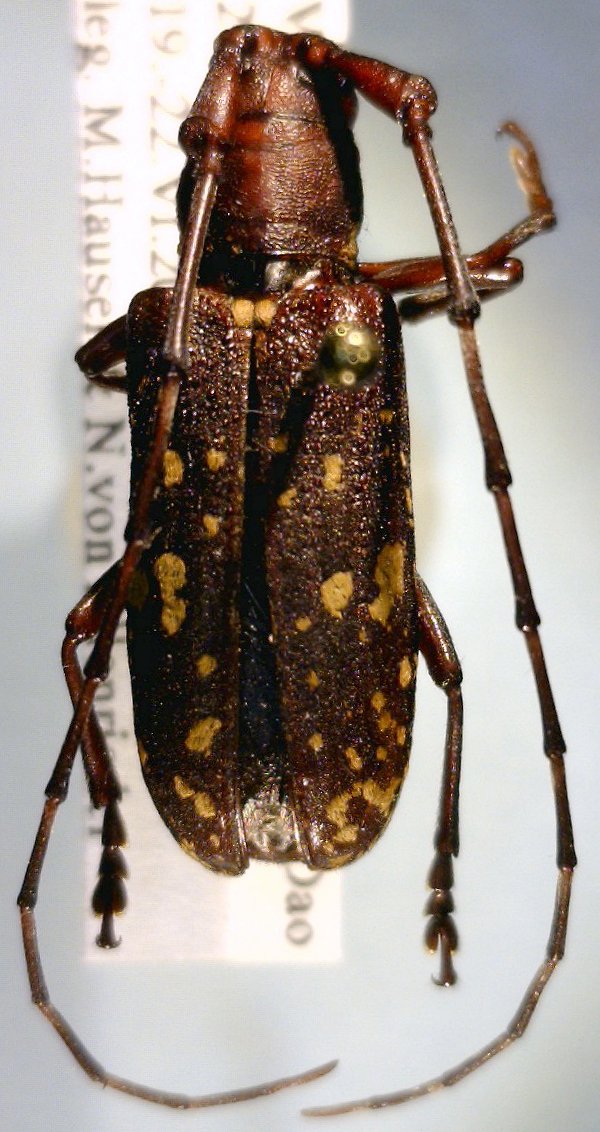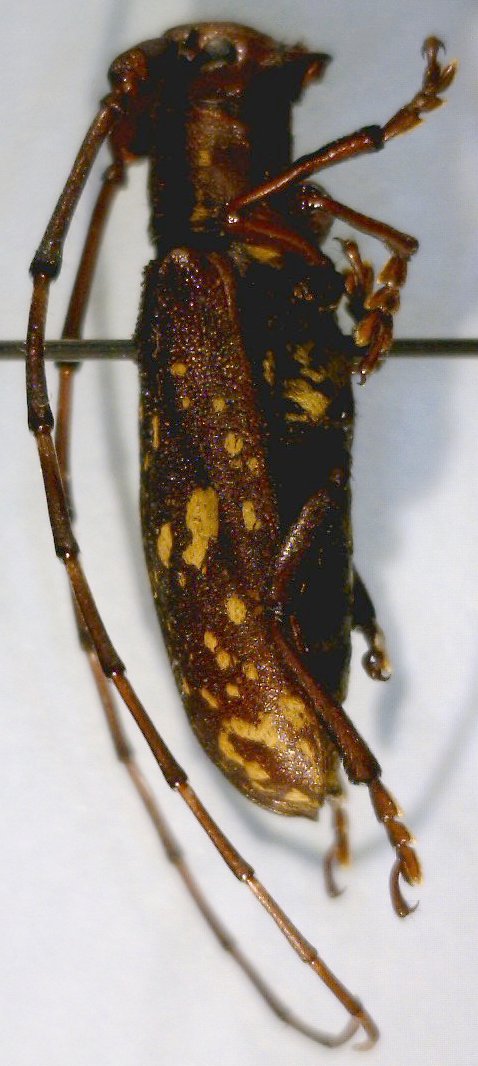| T O P I C R E V I E W |
| Larry Bezark |
Posted - 05/12/2014 : 00:05:19
 
91.77 KB
Tam Dao, Vietnam
Complete cicatrix, on this one, which is 15.4 mm.
Thanks,
Larry B. |
| 6 L A T E S T R E P L I E S (Newest First) |
| Larry Bezark |
Posted - 04/05/2024 : 23:06:41
Thank you Francesco, and as you know I am still prevented from viewing type photos.
Could we please end the embargo, I will not post any additional types from the forum not already on my website.
Regards,
Larry B. |
| Francesco |
Posted - 04/05/2024 : 22:33:35
Considering body size and pattern, it should be Monochamus mausoni Breuning, 1950.
Type visible here. |
| Larry Bezark |
Posted - 09/12/2014 : 00:31:33
The length of the antennal segments are much closer to Xenohammus than the Paragnia. It turns out I have one specimen of Paragnia from Thailand, and it is different than the one in this thread.
I will go with Xenohammus for now, thanks for the input.
Larry B. |
| Xaurus |
Posted - 07/12/2014 : 19:19:09
look at Xenohammus flavoguttatus Pu, 1999 from Hainan (but I have no description) |
| Larry Bezark |
Posted - 05/12/2014 : 18:04:10
OK, thank you Xavier.
Larry B. |
| Xavier |
Posted - 05/12/2014 : 08:45:01
Close to Paragnia fulvomaculata Gahan, 1893 but with different yellow spots (and 2 more, close the scutellum) |


